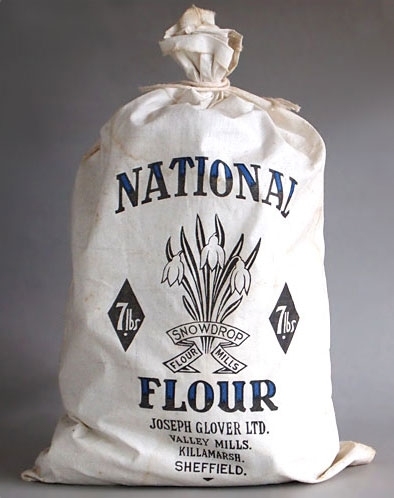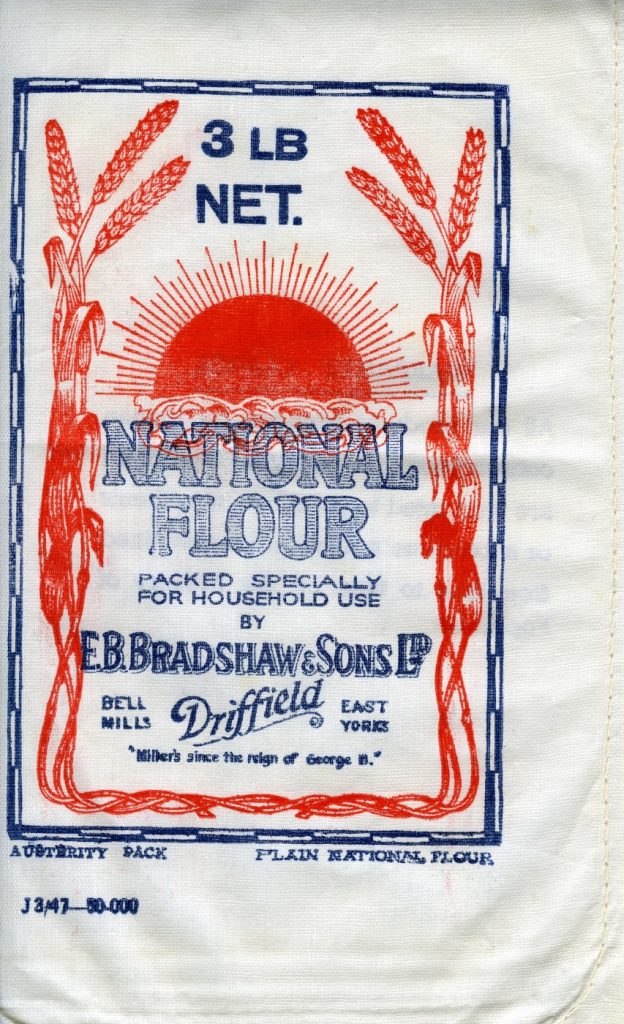This flour was Hitler’s secret weapon.

This Gem is a photograph of two flour bags, which were produced under Government regulations during the Second World War.
At the start of the war Britain was importing around 70% of its grain, but with the demands of war and the risk posed by U-Boats to imported supplies, the government sought ways to make limited grain supplies go further.
Thus, National Flour was introduced in 1942. Its extraction rate was around 85%, which was much higher that the white bread that was almost universally eaten before the war: a similar rate to today’s brown bread. Extraction rate refers to the amount of flour produced compared to grain – for example, at an extraction rate of 85% per 100kg of grain, 85kg of National Flour would be produced. White bread in comparison is more heavily milled and processed, with a rate of around 70%. In 1941, calcium fortification was also introduced as Rickets was found to be common amongst those joining the Women’s Land Army. Fortification of bread continues today in all bread aside from wholemeal. Fortification of bread continues today in all bread aside from wholemeal.
Bread was never rationed during the war, but it would come under rationing from 1946 till 1948. Commercial white bread, however, was banned altogether on the 6th April 1942, and sliced white bread wouldn’t be reintroduced until 1950, with the National Loaf abolished six years later. The National Loaf was unpopular and was dubbed ‘Hitler’s Secret Weapon’. It apparently had an unappealing colour and texture, but was much less wasteful than the more popular white bread and saved on limited supplies, as well as being healthier. Furthermore – at least according to the Minister of Food at the time – it acted as an aphrodisiac!
In today’s health-conscious world, with a backlash against white bread, it is interesting to see the unpopularity of the introduction of what effectively was brown bread. Indeed, the National Loaf didn’t appear to have any lasting effect, and as soon as it was reintroduced people started buying white bread again.
Gem from the Martin Watts Collection


Related links
- Further Reading: Without a reliable supply of food Britain would have lost the Second World War, however getting your daily bread was far more difficult during wartime. Learn all about the demands of war on the milling industry here.
- Gingham Girl: Flour bags, whilst at first unassuming have a rich and varied history. For instance, an enterprising company would turn them into dresses.
- 20th-Century Milling: Interested in the twists and turns of the modern milling industry? You can find out all about milling in the 20th century here.
